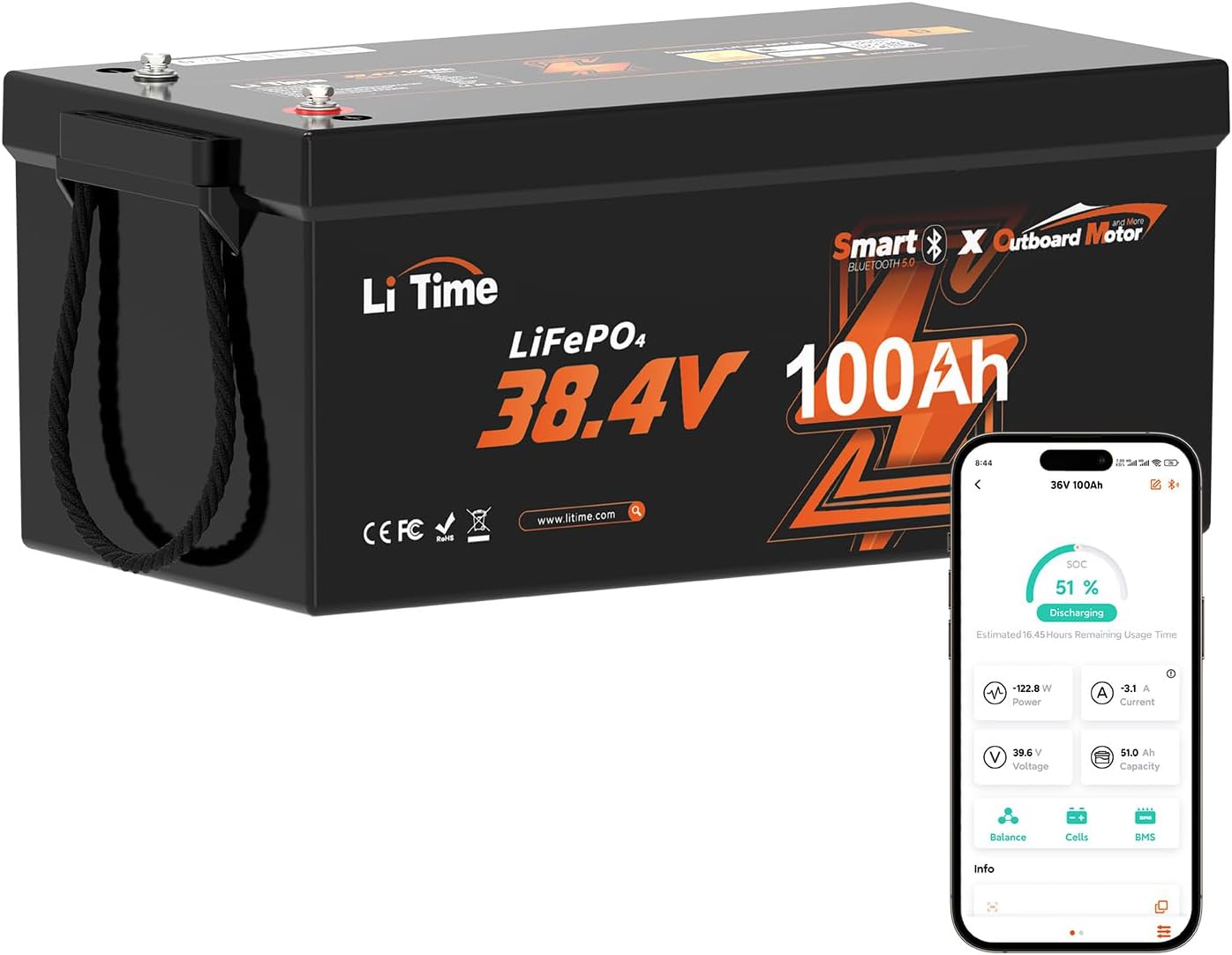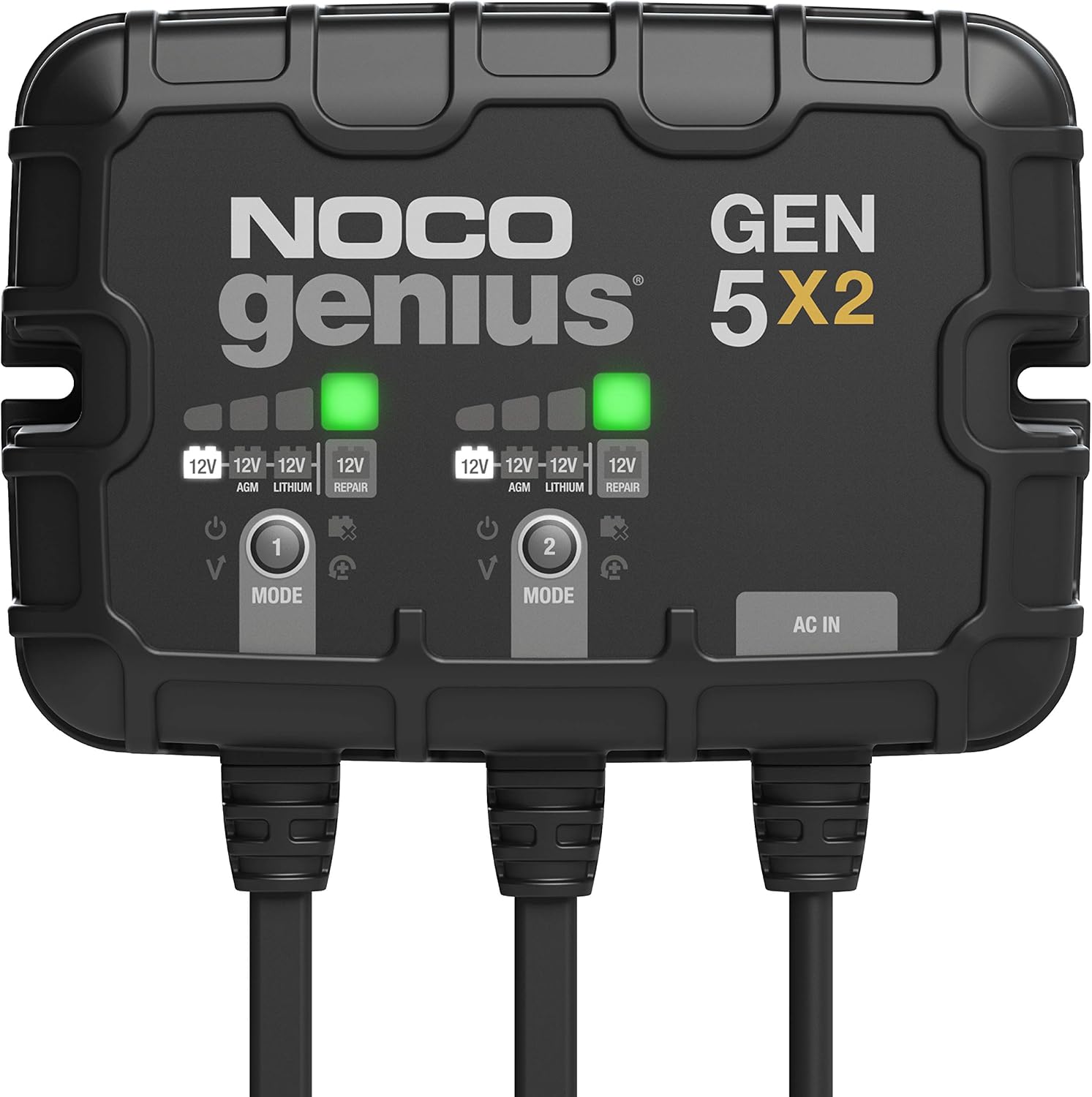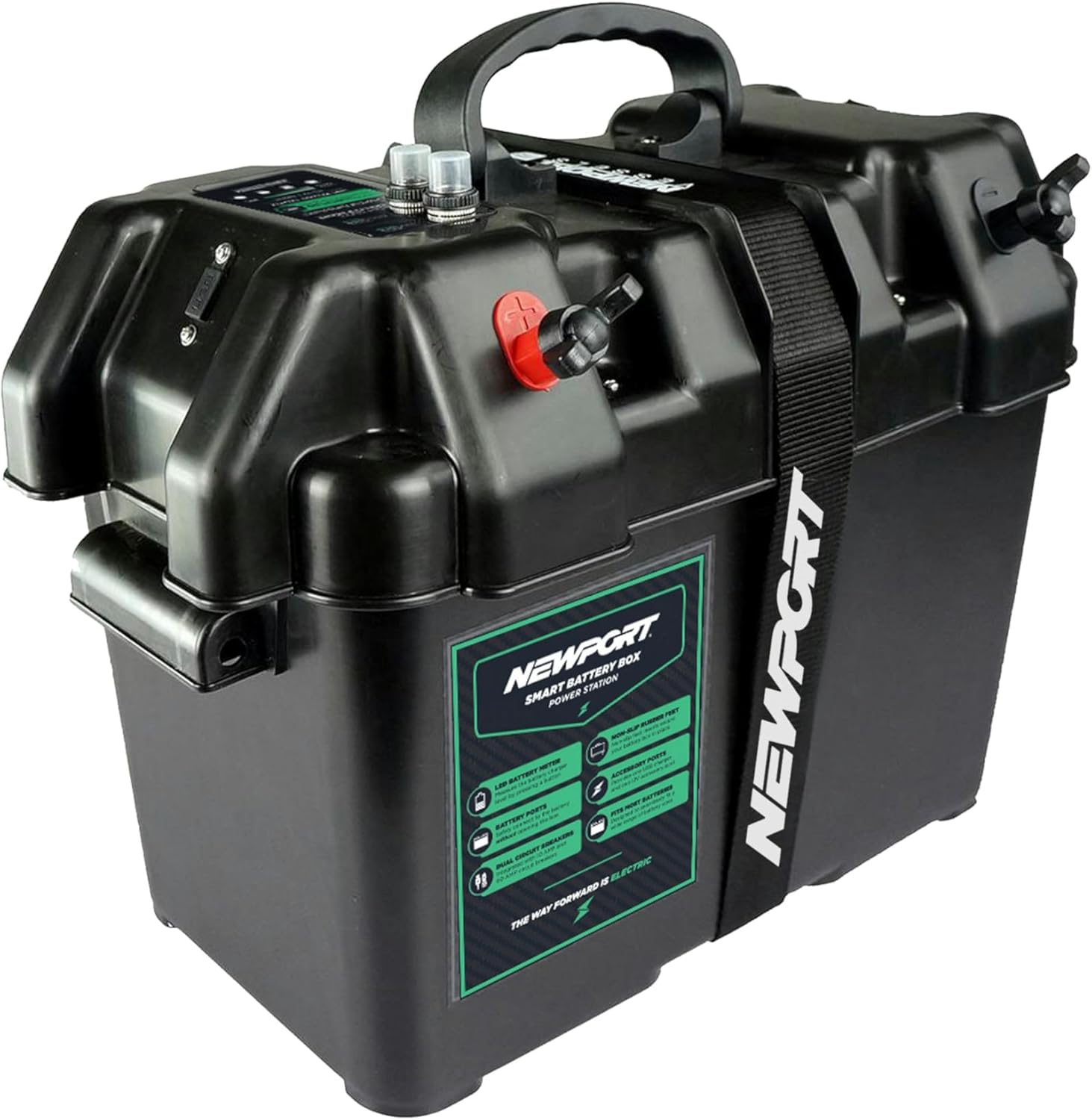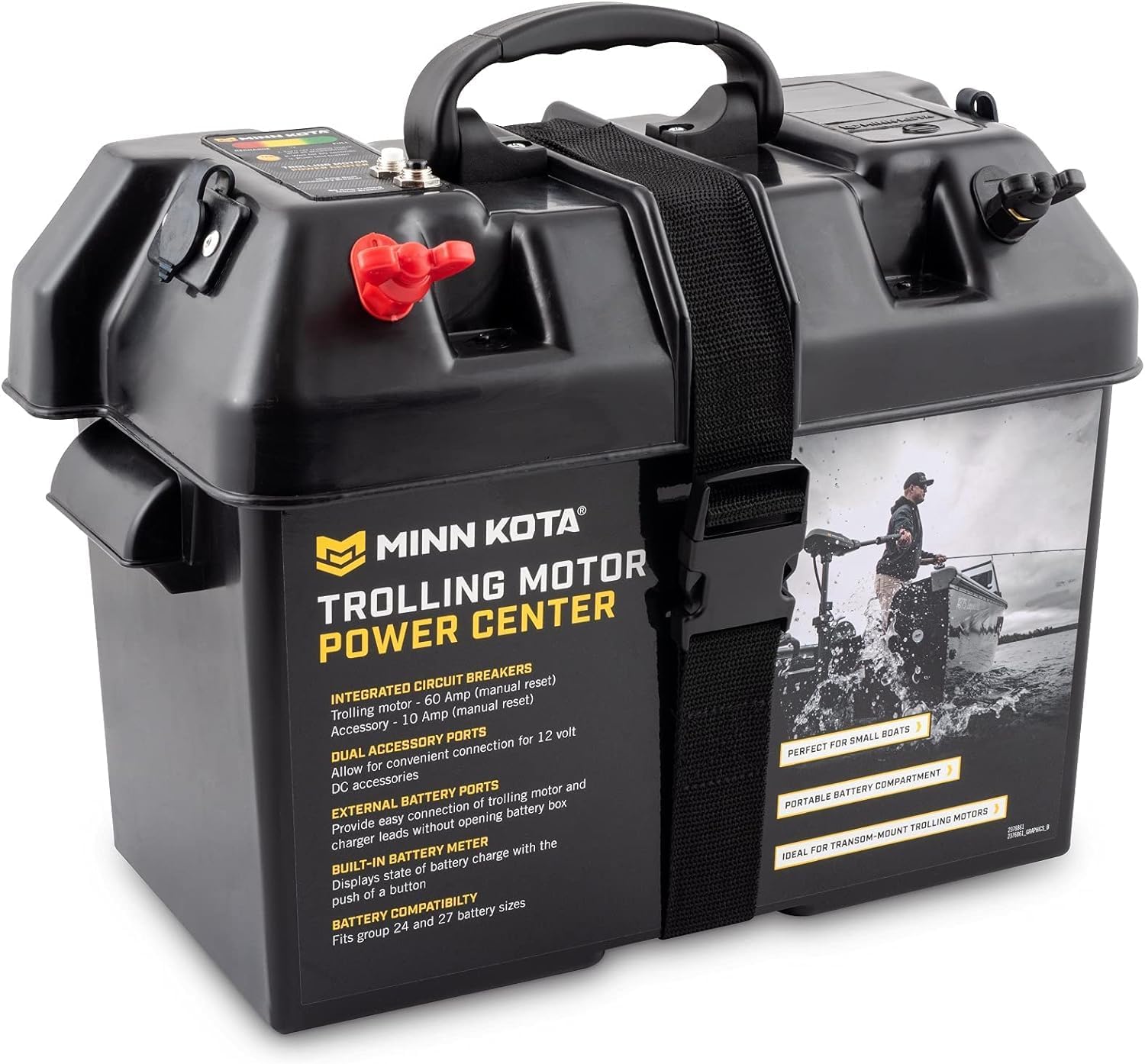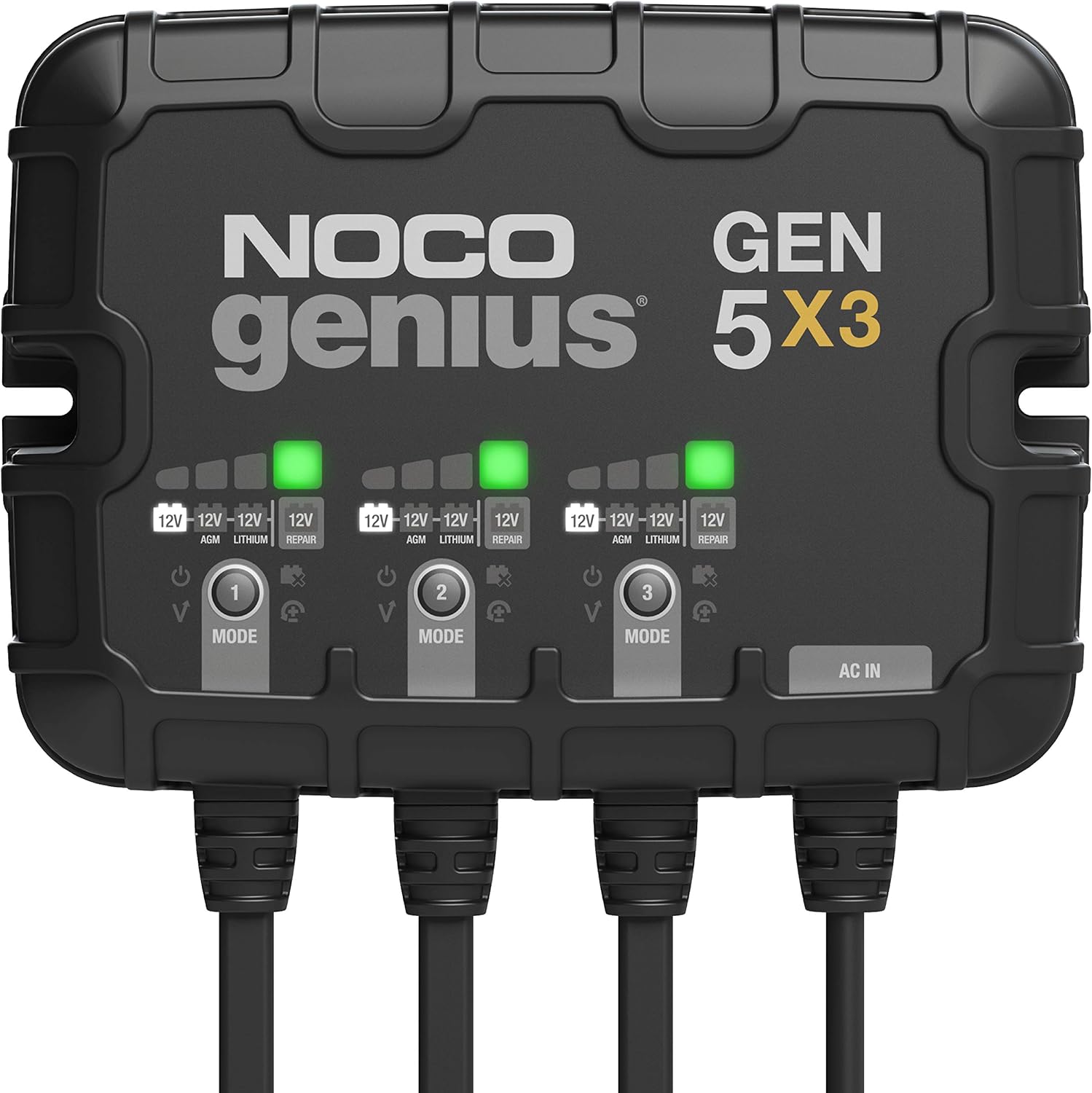Here’s an overview of the Best Marine Batteries that we’ll explore today:
Marine power systems demand reliability, safety, and long life in challenging environments. The five products in this guide cover high-performance lithium outboard batteries and a range of onboard charging and battery management solutions designed for trolling motors, sail and power boats, and auxiliary systems. My testing method focuses on real-world usability (installation ease, thermal behavior, and compatibility), objective specs (capacity, C-rates, protection features, IP ratings, and BMS sophistication), and value at their respective price points. I evaluated LiTime’s 36V 100Ah OBM for 36–72V systems and its robust protection suite; NOCO’s GEN5X2 and GEN5X3 for multi-bank onboard charging with temperature compensation and water immersion resilience; Newport Vessels’ portable battery box as a cost-effective hard-wired power center; and Minn Kota’s compact battery box as a simple, proven trolling motor companion. The range spans budget to premium options, with prices from $69.99 to $199.95 and a variety of use cases from basic charging to advanced remote monitoring and deep-cycle endurance.
1. LiTime 36V 100Ah OBM Bluetooth Low-Temp Protection LiFePO4 Battery
- Brand: Litime
- Manufacturer: Litime
Overview: The LiTime 36V 100Ah Electric Outboard Motor Battery is designed specifically for 36V–72V outboard systems, with a built-in 100A BMS and ABYC membership signaling professional industry alignment. It supports a 500A/1s surge, 1.2C for up to 3 minutes, and auto-recovery after overload in 30 seconds. It includes Bluetooth 5.0 for real-time monitoring, an IP65 rating for water and dust resistance, and an impressive long-cycle life claim of 4,000–15,000 cycles, implying a long service life under conservative use. Technical specifications indicate compatibility with 72V systems and a 28,800Wh energy potential in a 2S4P configuration, which translates to strong performance headroom for high-demand trolling motors. The 63.1 lb weight and 20.47 x 10.55 x 8.66 in footprint make it a substantial package intended for purpose-built installations.
Performance-wise, this OBM is optimized for heavy startup surges and sustained high-current draw typical of premium electric outboards. The built-in BMS with over 20 protections (including low-temperature cut-off, pre-charge, auto-recovery, and salt spray moisture resistance) reduces maintenance concern in harsh marine environments. The low-temperature cut-off helps protect cells in cold-water launches, though it may reduce usable capacity at sub-freezing temperatures. The Bluetooth connectivity allows monitoring of voltage, current, and state of health, which is valuable for remote diagnostics on larger vessels. Real-world caveats include the need for a compatible 36–72V motor system and the non-user-serviceable form factor, which means installation should be performed by a professional installer.
Pros
- High current surge capability (500A/1s) suitable for instant motor startup
- ABYC-aligned and professionally focused design
- Bluetooth 5.0 real-time monitoring
- IP65 protection and robust BMS with 20+ protections
- Long cycle life claim (4,000–15,000 cycles)
Cons
- Very heavy and requires compatible 36–72V system
- Price and installation complexity may be prohibitive for smaller boats
- Verified real-world cycle life depends on usage profile
2. NOCO Genius GEN5X2: 2-Bank
- Brand: NOCO
- Manufacturer: NOCO
Overview: The GEN5X2 is a compact 2-bank onboard charger rated 10A total (5A per bank) designed for lead-acid and lithium batteries, with selectable charging modes per bank (12V, AGM, Lithium) and temperature-compensated charging. It’s IP68-rated for water exposure and includes Force Mode to recover deeply discharged batteries, a flexible mounting system, and a 72-inch DC cable pair. Weighing around 5.26 pounds, it’s purpose-built for marine environments where space is at a premium and installation flexibility matters. The unit is well-regarded for reliability, with NOCO’s reputation and a three-year warranty backing it. Price at $129.99 positions it as a mid-range option that emphasizes charging versatility and ruggedness.
Performance-wise, GEN5X2’s independent banks help preserve battery life by preventing cross-bank interactions during charging. Temperature compensation ensures safer charging across the typical marine temperature range, reducing overcharge risk in heat and undercharge risk in cold climates. The ability to revive batteries down to 1V with Force Mode is a strong feature for sailors or boaters who sometimes neglect charging. The installation is straightforward, with a mounting system designed for versatile orientations, even upside down, and a sealed IP68 rating guarding against splash and immersion. Practical use cases include shore-power upgrades on small to mid-sized boats, trolling motor systems, and multi-battery setups requiring reliable maintenance charging.
Pros
- Independent 2-bank design with 5A per bank
- Temperature compensation for safe charging
- Force Mode for deeply discharged batteries
- IP68 waterproof and rugged marine construction
- Compact and easy to mount
Cons
- Limited to 2 banks (not ideal for larger electrical systems)
- Not a full battery management system with protections beyond charging
- Higher-end lithium considerations may require compatible battery chemistry
3. Newport Trolling Motor Smart Battery Box Power Center with USB
- Brand: Newport Vessels
- Manufacturer: Newport Vessels
Overview: Newport Vessels’ Newport Trolling Motor Smart Battery Box Power Center is a budget-friendly external battery box designed for trolling motors. It features external battery ports, dual integrated circuit breakers (10A and 60A), a USB charger, and a 12V accessory port. Its dimensions (approximately 17 x 12 x 10 inches) and a weight around 3 pounds make it a compact, portable solution that fits Group 24 and 27 batteries. This product is aimed at simplifying trolling motor wiring and providing accessible charging/connection points without opening the box, which is a practical enhancement for budget-conscious boaters.
In practice, the external ports and dual breakers help protect circuits while offering straightforward plug-and-play use for trolling motors and accessories. The built-in meter provides at-a-glance charge status, though it’s basic and not a full battery management system. The external USB and DC ports are convenient for powering devices and accessories on the water. For users with smaller boats or simpler power needs, this box offers a solid balance of price, portability, and utility, though it lacks the advanced protections and long-term battery chemistry management of higher-end chargers.
Pros
- Very affordable at $69.99
- External battery ports without opening the box
- Dual circuit breakers provide fundamental protection
- USB charger and 12V accessory port
- Fits Groups 24 and 27 batteries
Cons
- Limited protection features vs higher-end boxes
- No integrated BMS or advanced monitoring
- Not a charger; relies on separate charging solution
4. Minn Kota Marine Battery Box Power Center for Trolling Motor Leads with Meter
- Brand: Minn Kota
- Manufacturer: Minn Kota
Overview: Minn Kota’s battery box is a straightforward, compact trolling motor power center designed for small boats and transom applications. It includes external battery terminals, a built-in 4- LED battery meter, a 60A top-mounted resettable circuit breaker, two 12V accessory ports, and simple inline wiring with ring terminals inside. It’s compatible with Group 24 and 27 batteries and emphasizes accessibility and simplicity. At a weight of roughly 1 pound and dimensions of 7 x 13.5 x 12 inches, it’s a low-profile option that fits in tight spaces and supports basic trolling motor configurations.
With practical use in mind, the Minn Kota unit makes reading state of charge quick via the LED meter, which is useful for on-the-water decisions. The inclusion of two accessory ports and a robust top breaker helps protect circuits and simplifies wiring for anglers and small-boat owners. However, it’s not a charger itself, so users must pair it with a separate charging system. The rugged plastic construction and mounting suitability for saltwater usage make it a dependable, no-frills option for entry-level setups.
Pros
- Simple, compact design for easy mounting
- Direct battery terminals and porch-side wiring options
- 4-LED state-of-charge meter is quick to read
- Two 12V accessory plugs and 60A top breaker
- Lightweight and affordable
Cons
- No integrated charging or advanced protection
- Not a full battery management solution
- Limited to basic trolling motor setups
5. NOCO Genius GEN5X3: 3-Bank
- Brand: NOCO
- Manufacturer: NOCO
Overview: The GEN5X3 is NOCO’s premium 3-bank onboard charger delivering 15A total (5A per bank), with selectable modes for each bank (12V, AGM, Lithium) and an IP68 waterproof rating. Its compact form factor (10.08 x 8.86 x 5.63 inches, 6.09 lb) and 3-year warranty position it as a versatile, high-end charging solution for boats with multiple battery strings. It includes temperature compensation, Force Mode for deeply discharged packs, and a robust mounting system designed to survive the marine environment. At $199.95, it sits at the top end of the price range, reflecting its multi-bank capability and build quality.
In operation, GEN5X3 excels at concurrently maintaining several batteries—great for boats with distinct start, deep-cycle, and auxiliary systems. Independent banks reduce cross-charge interactions, improving overall battery health. The combination of IP68 sealing, thermal sensor feedback, and Force Mode ensures performance across seasons and boat types. Its compatibility with lead-acid and lithium batteries broadens applicability, making it suitable for premium boat owners who require reliable, modular charging for complex electrical setups.
Pros
- Three independent 5A banks for complex systems
- Temperature-compensated charging and Force Mode
- IP68 waterproof rating and rugged build
- Compact footprint with flexible mounting
- Excellent for multi-battery configurations
Cons
- Highest price among the set
- Requires additional battery management considerations for some chemistries
- Installation and wiring are more involved than single-bank chargers
Frequently Asked Questions
We’ve compiled answers to the most common questions about marine batteriess to help you make an informed decision.
Conclusion
.
.
Final thoughts here.
